
Roots
To truly comprehend what ancestral hair care practices shielded textured hair, one must first feel the very structure of a strand—its unique spiraling architecture, its innate thirst, its delicate yet resilient nature. It is a story etched not merely in scientific diagrams, but in the very memory of our kin, a narrative passed down through generations. For those of us whose crowns bear the legacy of coils, kinks, and waves, understanding our hair’s elemental make-up is not an abstract exercise; it is a profound connection to a heritage of wisdom.
Our hair, by its very design, demands a different kind of attentiveness, a gentle hand, and practices that honor its propensity for dryness and its susceptibility to mechanical stress. This understanding, whether gleaned through ancient observation or modern microscopy, forms the bedrock upon which protective traditions were built.
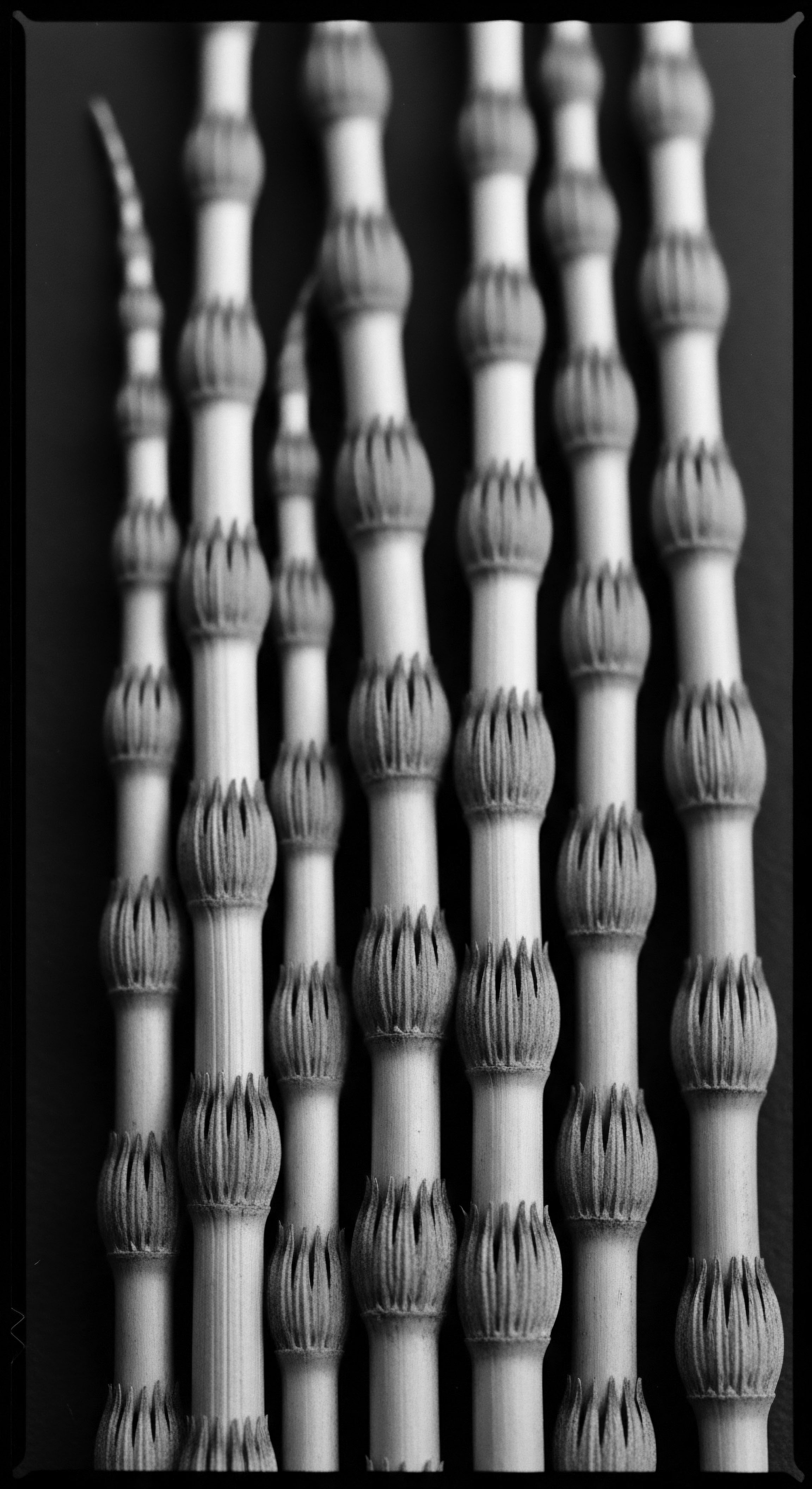
The Anatomy of Coiled Strands
Consider the hair shaft itself, emerging from its elliptical follicle. Unlike the rounder, straighter hair types, textured hair grows in a distinctly helical fashion, often twisting and turning as it ascends. This helical growth means that the cuticle, the hair’s outermost protective layer, does not lie as flat and smooth as it might on a straighter strand. These raised cuticles, while offering a certain grip, also allow moisture to escape more readily and make the hair more prone to tangling and breakage when friction occurs.
Ancestral caregivers, without microscopes, observed this reality; they saw the hair’s tendency to dry, its capacity for breakage, and devised methods to counteract these inherent characteristics. Their practices were, in essence, an intuitive science, a direct response to the biological truths of the hair they tended.
The helical structure of textured hair, with its raised cuticles, inherently calls for practices centered on moisture retention and reduced friction.
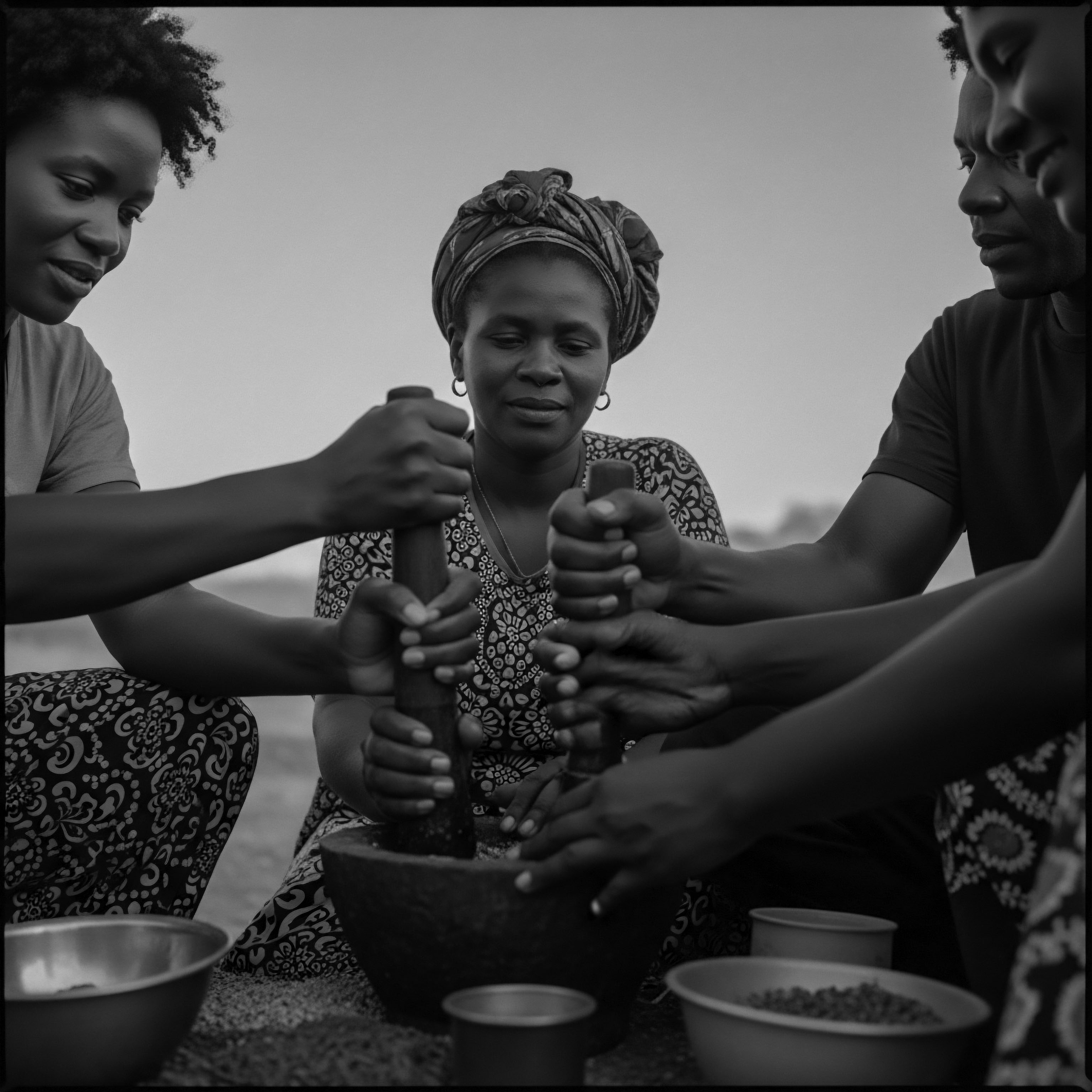
Naming Our Hair, Honoring Our Lineage
Long before standardized numerical systems, communities across the diaspora held their own ways of describing and categorizing hair. These descriptions were not merely aesthetic; they often carried social, spiritual, and protective significance. A mother might speak of her child’s hair as “sheep’s wool” or “peppercorns,” not as a dismissal, but as an affectionate recognition of its density and curl, guiding her choice of styling and conditioning.
In some West African cultures, hair types were associated with specific ancestral lines or even spiritual gifts. The language itself became a part of the protective practice, a way of acknowledging the hair’s unique character and thus its specific needs.
- Akwaba ❉ A term from some Akan traditions, perhaps referring to welcoming hair, healthy and cared for.
- Kinky ❉ A descriptive word that, despite its later negative connotations, once simply described the tight, zigzagging coils of certain hair types.
- Nappy ❉ A term with a painful history, yet one reclaimed by many as a descriptor of tightly coiled, unprocessed hair, reflecting a deep connection to ancestral textures.
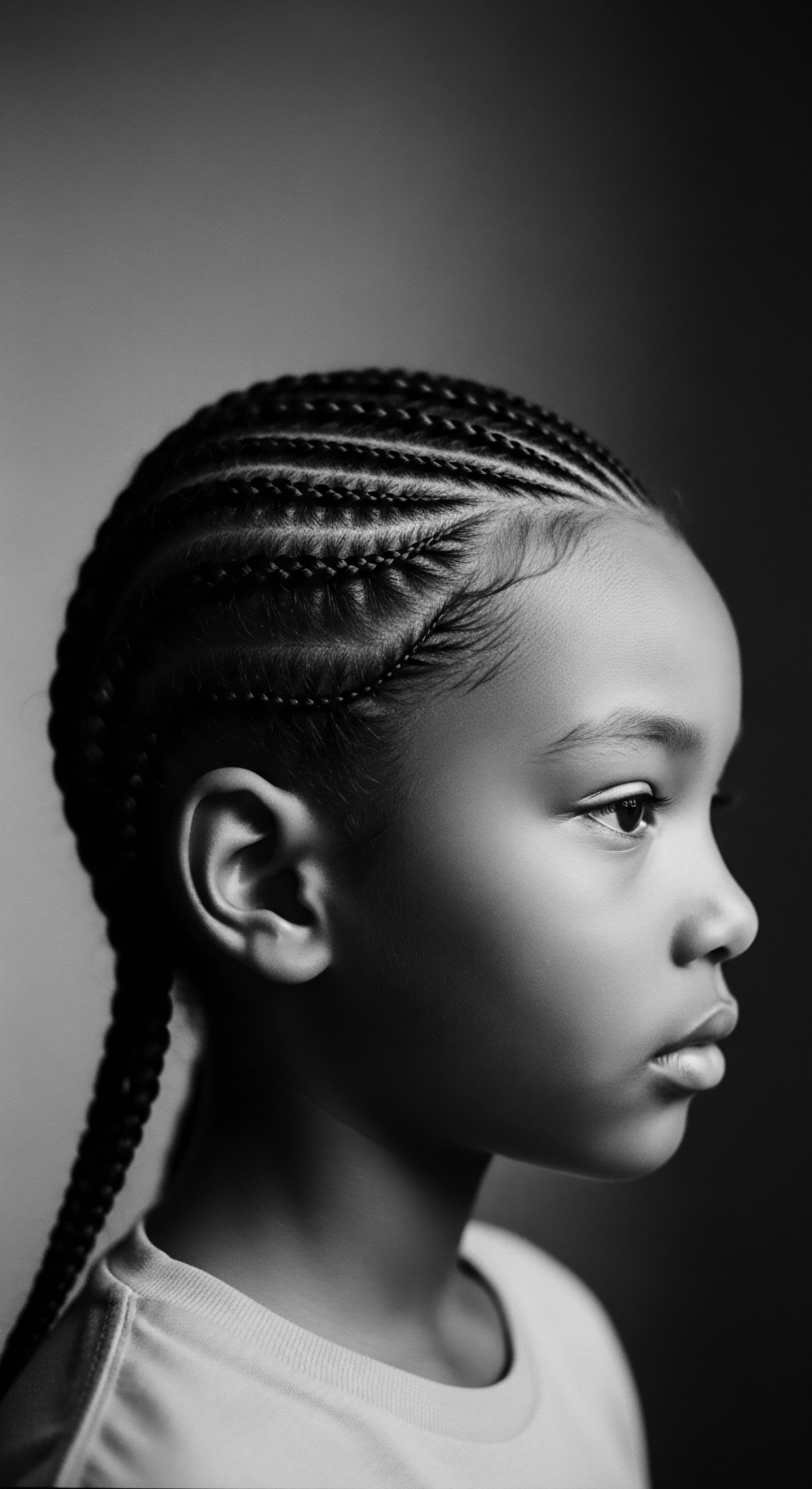
Environmental Factors and Hair’s Sustenance
The very environments our ancestors inhabited played a considerable role in shaping their hair care traditions. In sun-drenched lands, protection from harsh UV rays and arid conditions was paramount. In humid climates, managing moisture absorption and preventing fungal growth on the scalp were key concerns.
Dietary habits, rich in plant-based oils, fruits, and vegetables, provided internal nourishment that supported hair health. These external and internal factors led to the adoption of certain ingredients and techniques that were not just about appearance, but about the hair’s very survival and integrity.
| Observed Hair Trait Tendency for dryness |
| Ancestral Protective Practice Regular application of plant oils and butters (e.g. shea, coconut). |
| Observed Hair Trait Proneness to tangles and knots |
| Ancestral Protective Practice Finger detangling, wide-tooth combs, pre-braiding for wash. |
| Observed Hair Trait Vulnerability to breakage |
| Ancestral Protective Practice Protective styling, minimal manipulation, natural conditioners. |
| Observed Hair Trait Sensitivity to sun/heat |
| Ancestral Protective Practice Headwraps, hats, deep conditioning treatments. |
| Observed Hair Trait These practices demonstrate an intuitive understanding of textured hair's needs, passed down through generations. |
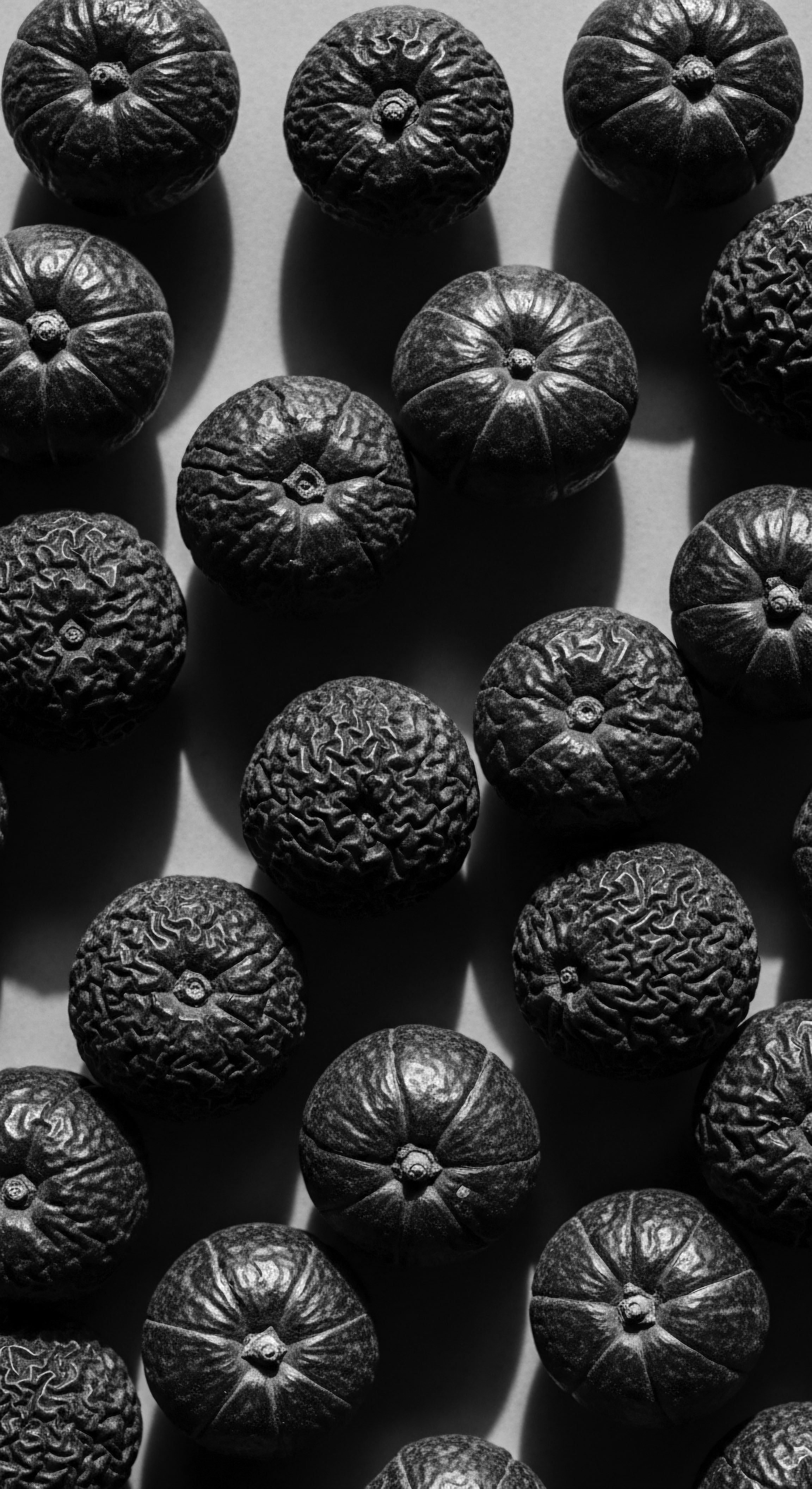
Ritual
Stepping from the quiet contemplation of hair’s fundamental nature, we arrive at the vibrant space of applied wisdom—the rituals, the techniques, the very artistry that transformed understanding into action. What historical hair care practices protect textured hair? The answer lies not in a single act, but in a symphony of movements, a dance of hands and tools that honored the hair’s delicate structure while celebrating its strength.
This is where the heritage truly comes alive, where ancestral knowledge, honed over centuries, offers a guiding light for contemporary care. It is a testament to the ingenuity and deep connection our forebears held with their crowns.
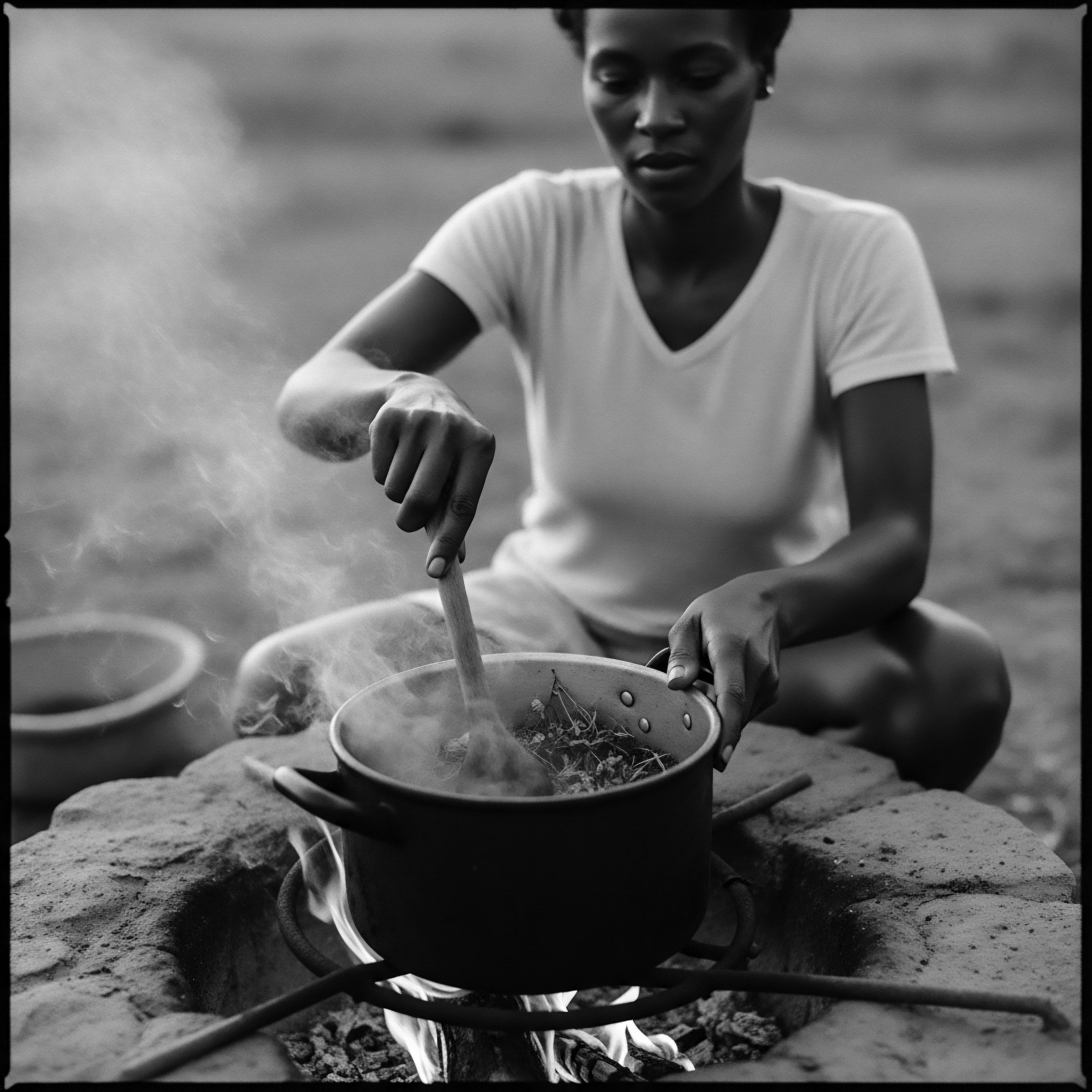
The Protective Styling Legacy
The concept of “protective styling” is far from new; it is a legacy. From the intricate cornrows depicted on ancient Egyptian tomb walls to the elaborate braided coiffures of West African empires, styles were crafted not only for beauty and social status but also to safeguard the hair from environmental rigors and daily manipulation. These styles—braids, twists, and locs—minimized exposure to the elements, reduced friction, and allowed the hair to rest and retain moisture. The skill involved in creating these complex patterns was often taught from a young age, a communal act of care and cultural preservation.
Consider the practice of braiding, a cornerstone of many African hair traditions. Beyond its aesthetic appeal, braiding served as a highly effective protective measure. By securing strands together, it prevented individual hairs from rubbing against each other, reducing friction-induced breakage. It also kept the hair neatly contained, shielding it from dust, wind, and sun.
Different braiding patterns could even serve specific purposes, such as preparing hair for washing by pre-sectioning it, or for long journeys where daily maintenance was impractical. These were not mere fashion choices; they were intelligent, practical applications of hair science, centuries ahead of formal study.
Protective styles, like braids and twists, were not just adornments but sophisticated methods to shield textured hair from environmental damage and manipulation.
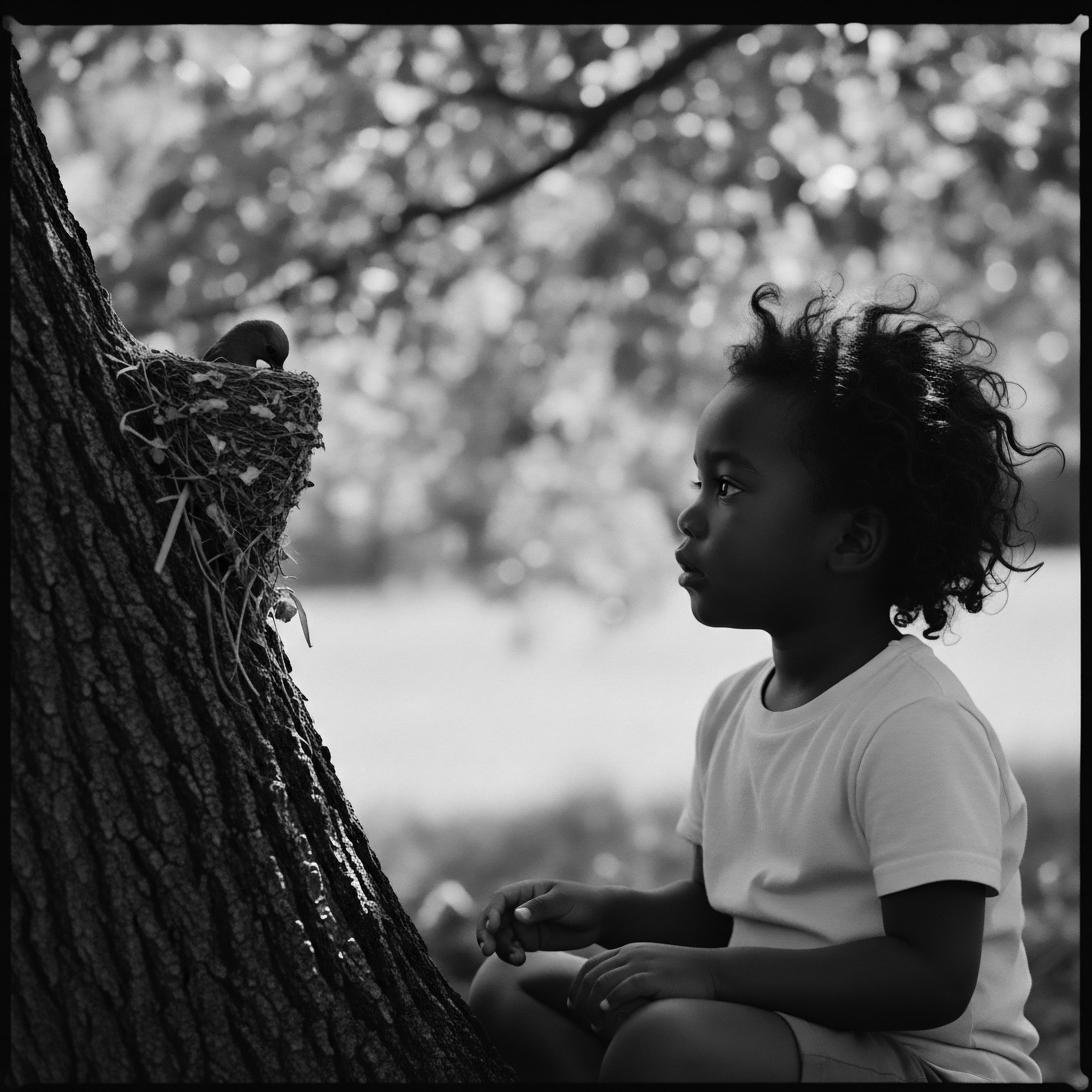
Tools of the Ancestors, Tools of Today
The implements used in historical hair care were often extensions of nature itself, crafted from wood, bone, or natural fibers. Wide-tooth combs, fashioned from various woods, were ideal for detangling dense, coily hair without causing undue stress. Hairpins, often decorative, held styles securely while minimizing tension.
The evolution of these tools speaks to a deep understanding of hair’s needs—that it required gentle handling, broad surfaces for detangling, and natural materials that would not strip its moisture. These tools, sometimes considered sacred objects, were integral to the protective ritual.
Even the hands themselves were perhaps the most significant tools. The art of finger detangling, the gentle application of oils, the skilled sectioning for intricate styles—these were learned through observation and practice, a tactile transmission of ancestral wisdom. The touch, the feel, the responsiveness to the hair’s individual needs were all part of the protective ritual.
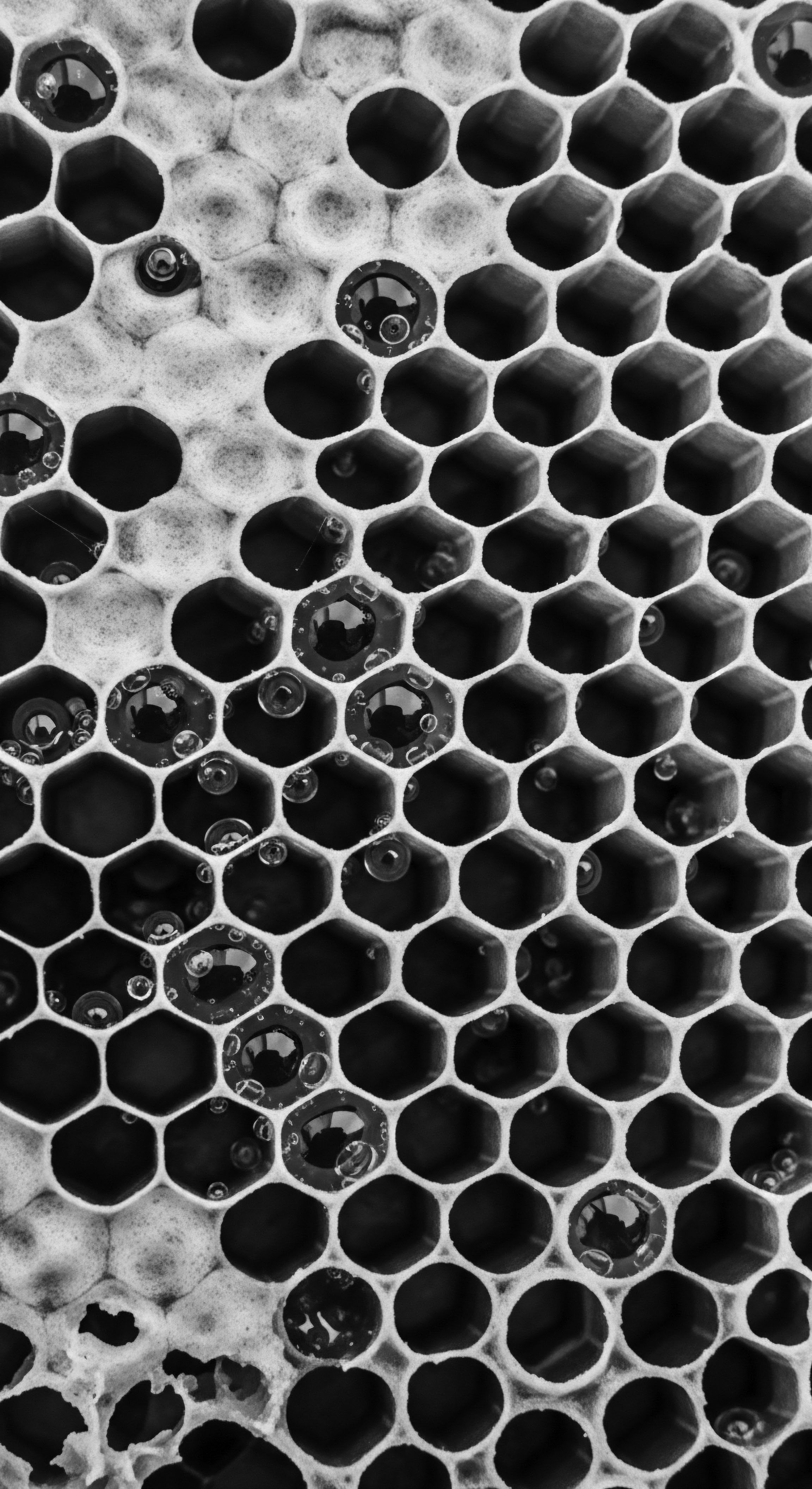
Transformations and Cultural Statements
Hair in many historical African societies was a profound canvas for identity, status, and community. Wigs, for instance, were worn by ancient Egyptians not only for aesthetic reasons but also for hygiene and protection from the sun, often crafted from human hair, wool, or plant fibers and coated with conditioning balms. The careful creation and wearing of these hairpieces speak to a long-standing practice of enhancing and protecting one’s natural hair, while also making powerful cultural statements. These transformations were not about hiding one’s natural hair, but about expressing oneself within a framework of care and cultural meaning.
The practice of applying natural clays, ochres, or plant-based dyes also served a dual purpose ❉ aesthetic alteration and protection. These natural coatings could seal the cuticle, add weight, and even offer a degree of sun protection. The transformations were always rooted in a knowledge of what the hair could withstand and what would ultimately serve its health.
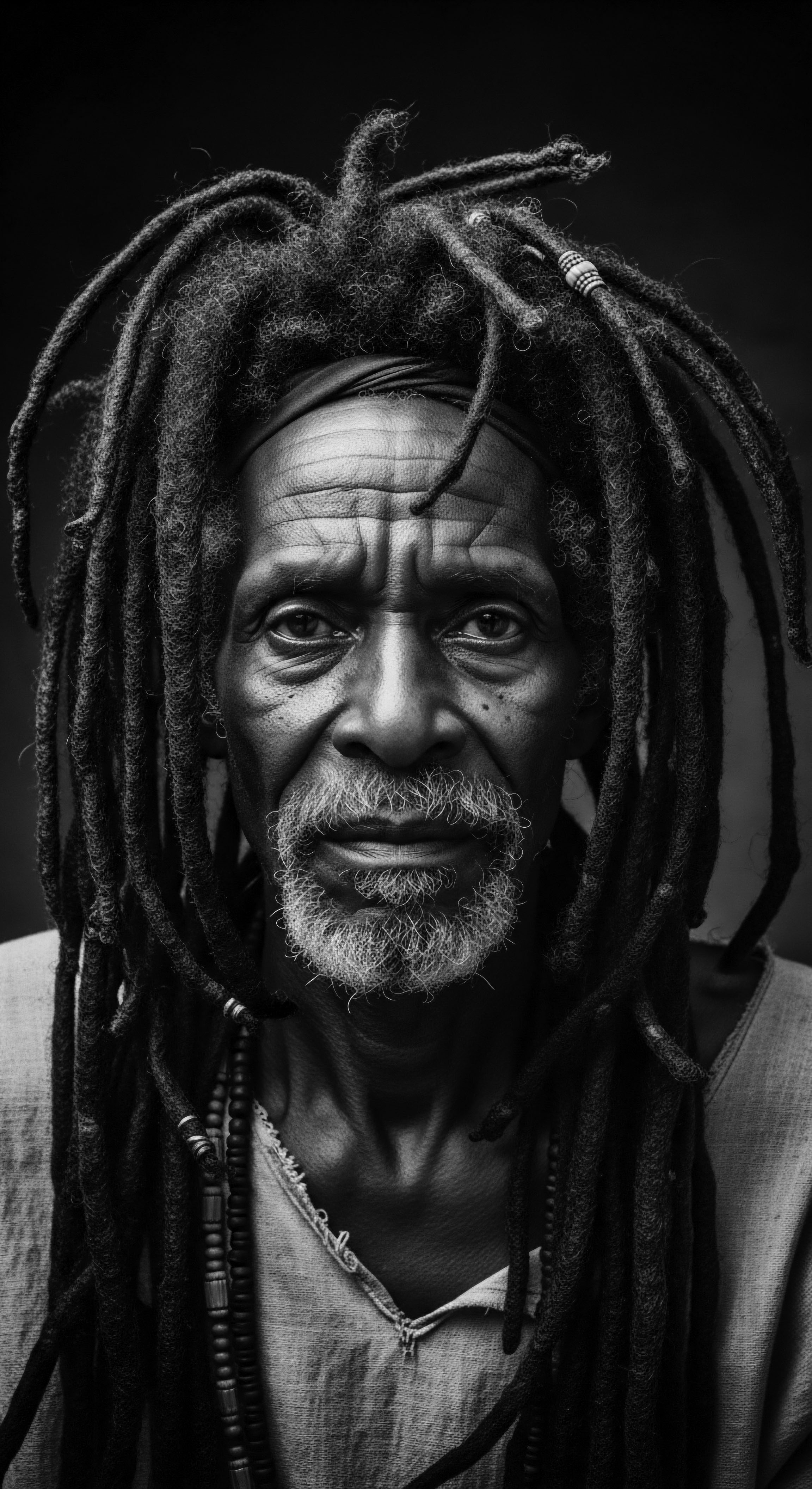
Relay
How does the wisdom of yesteryear, particularly regarding what historical hair care practices protect textured hair, speak to our present-day understanding of hair health and identity? The answer lies in a relay, a continuous exchange between ancestral knowledge and contemporary science, where each validates and deepens the other. This final segment invites a profound look at the enduring practices that shielded textured hair, moving beyond mere technique to the very ethos of care that sustained generations. We consider the profound interplay of biology, community, and spirit that shaped these traditions, acknowledging their persistent resonance.
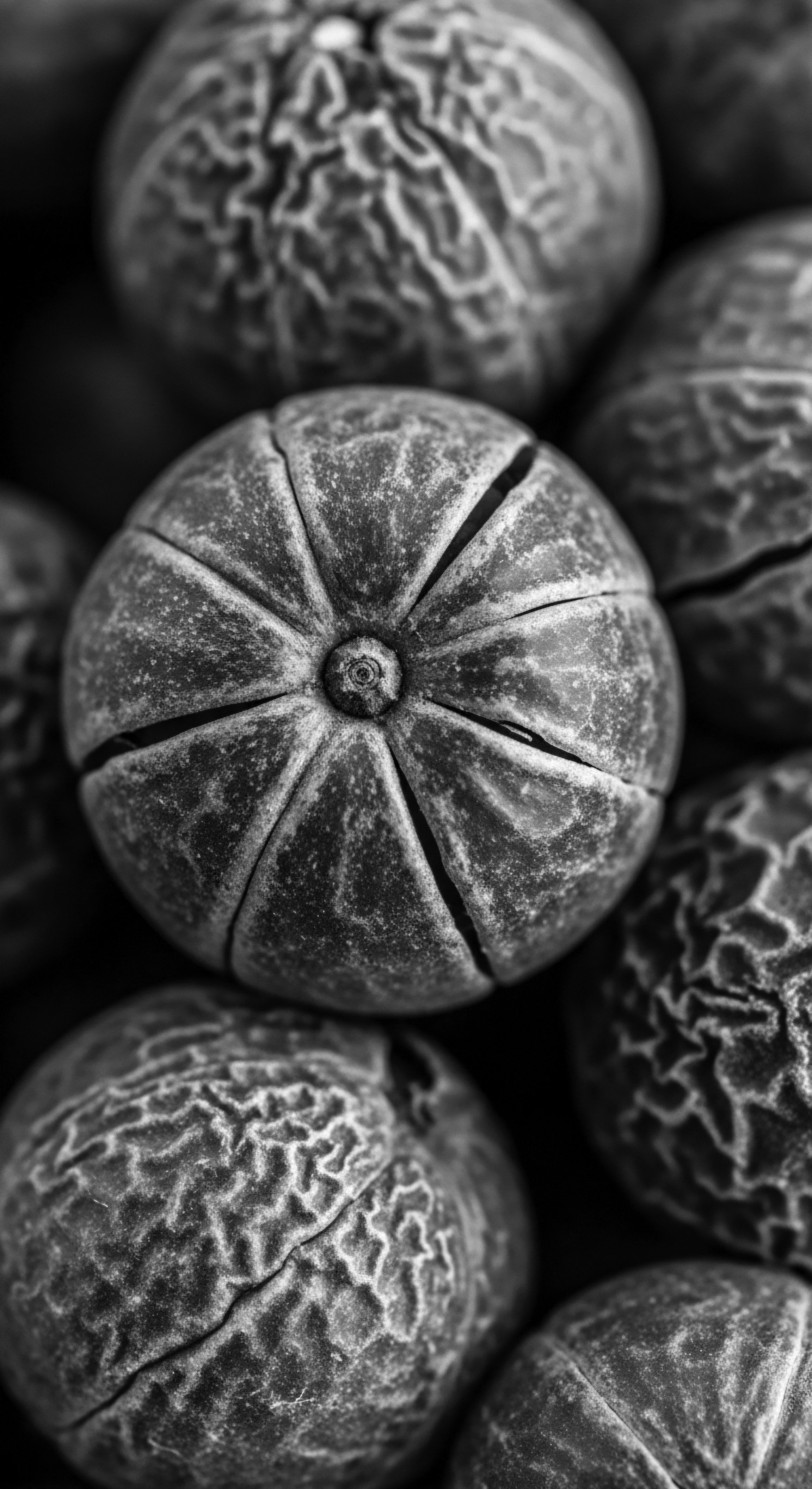
Building Regimens from Ancestral Wisdom
Our ancestors, though without the vocabulary of “regimens,” certainly followed structured approaches to hair care. Their practices were cyclical, aligned with natural rhythms and the demands of daily life. The routine washing, oiling, detangling, and styling were not random acts but a deliberate sequence aimed at maintaining hair health.
These routines were often communal, with mothers, aunts, and grandmothers teaching younger generations, thereby reinforcing a shared cultural heritage of care. The emphasis was always on minimal manipulation, deep conditioning with natural substances, and protective styling—principles that remain foundational for textured hair today.
The use of plant-based ingredients formed the bedrock of these historical regimens. From the rich, emollient shea butter of West Africa to the nourishing coconut oil of coastal communities, natural resources were carefully selected for their protective and conditioning properties. These substances provided vital lipids, vitamins, and antioxidants, shielding the hair shaft and scalp from environmental stressors.

The Nighttime Sanctuary and Head Covering Legacy
One of the most profound historical practices for protecting textured hair, often overlooked in its simplicity, is the nighttime ritual of covering the hair. Across countless cultures, from ancient Egypt to diverse African communities, and through the African diaspora, headwraps, scarves, and later, bonnets, served as crucial nocturnal guardians. This practice was not merely for modesty or aesthetic; it was a highly effective protective measure.
By encasing the hair in a soft fabric, it prevented friction against rough sleeping surfaces like cotton, which can draw moisture from the hair and cause tangles and breakage. This simple act preserved the hair’s moisture, reduced frizz, and maintained styles, thereby extending the time between manipulations.
A powerful historical example of this enduring practice comes from the Basara women of Chad, whose long, strong hair is often attributed to their consistent use of a traditional hair care routine involving a powdered mixture known as Chebe. This powder, composed of specific grains and herbs, is applied to the hair, which is then braided and covered. While Chebe itself is a conditioning treatment, the consistent covering of the hair, particularly at night, is a complementary practice that safeguards the hair from physical abrasion and helps retain the moisture and conditioning agents.
The Basara women’s tradition underscores how protective covering, combined with natural ingredients, creates a holistic system for hair preservation (Gale, 2004). This deep respect for preserving hair through covering is a living legacy.

Ingredients from the Earth, Wisdom from the Elders
The earth itself provided the apothecary for ancestral hair care. Ingredients were chosen not just for their availability, but for their observed effects on hair health.
- Shea Butter ❉ From the shea tree, its rich fatty acids provided deep conditioning and a protective barrier against moisture loss.
- Coconut Oil ❉ Known for its ability to penetrate the hair shaft, reducing protein loss and adding luster.
- Aloe Vera ❉ Used for its soothing properties for the scalp and its moisturizing benefits for the hair.
- Rhassoul Clay ❉ From the Atlas Mountains, used for gentle cleansing and detoxification of the scalp and hair without stripping natural oils.
These natural emollients, humectants, and cleansers formed the basis of comprehensive care. Modern science now validates what our ancestors knew instinctively ❉ that certain plant lipids can strengthen the hair, reduce hygral fatigue, and maintain scalp health. The continuity of these ingredients in contemporary textured hair care speaks to their enduring efficacy and the wisdom of those who first discovered their properties.
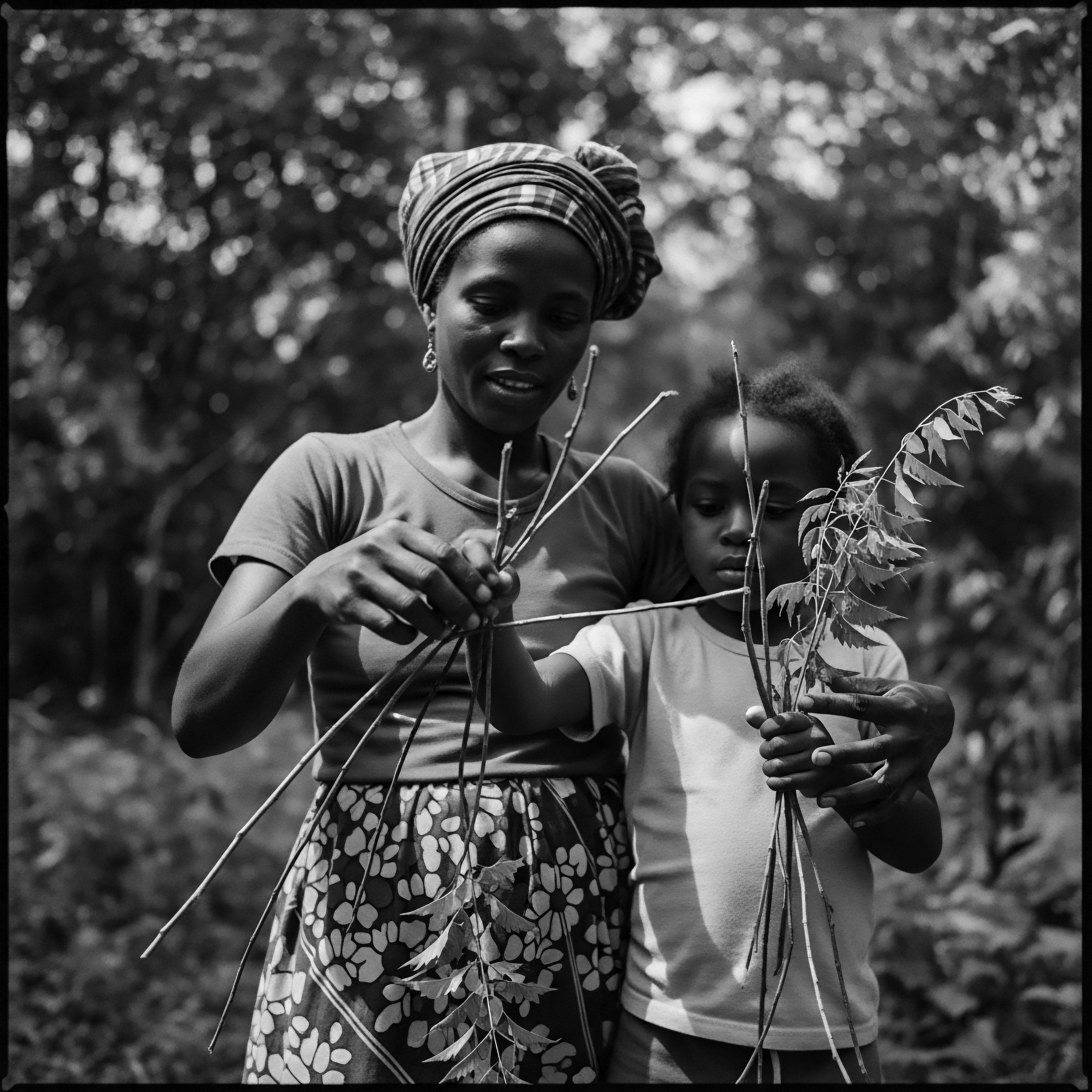
Addressing Hair Challenges, Ancestral Ways
Historical communities faced hair challenges similar to our own ❉ dryness, breakage, and scalp irritations. Their solutions were rooted in observation and natural remedies. For dryness, repeated applications of oils and butters were common. For scalp issues, infusions of anti-inflammatory herbs or specific clays were applied.
The approach was often preventative, focusing on maintaining the hair’s natural state rather than aggressive repair after damage occurred. This preventative stance, so common in ancestral wellness philosophies, aligns with modern principles of gentle care for textured hair. The practices were holistic, viewing hair health as inseparable from overall well-being and environmental harmony.
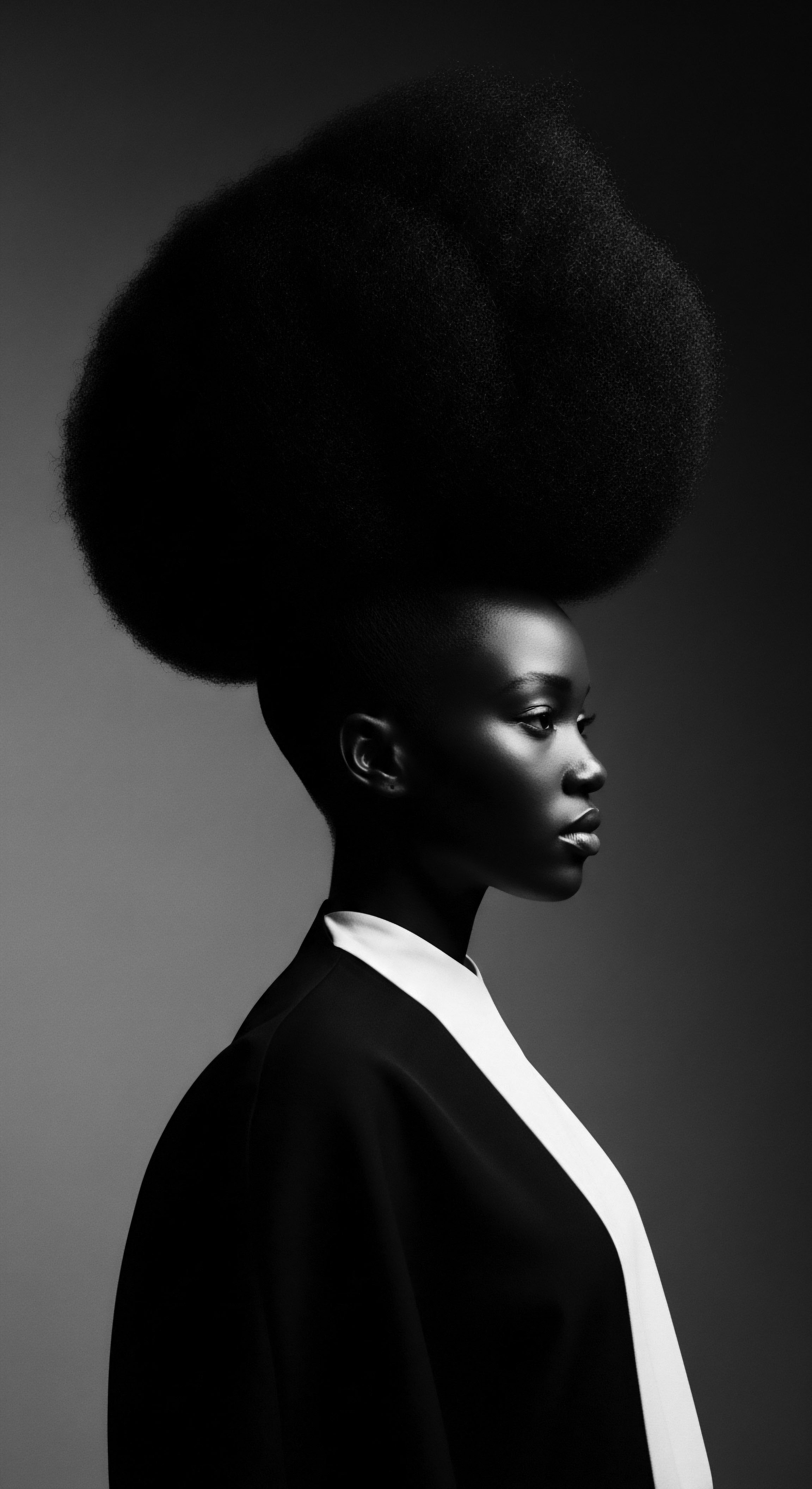
Reflection
As we journey through the enduring legacy of what historical hair care practices protect textured hair, we find ourselves standing at a profound crossroad. The echoes of ancestral wisdom, carried through the rhythmic motions of hands braiding and oils anointing, remind us that hair care is more than mere grooming; it is a living archive, a testament to resilience, ingenuity, and cultural continuity. Each coil, each strand, holds within it a memory of practices that safeguarded not only physical health but also identity and spirit.
The lessons from the past, particularly the deep reverence for moisture, minimal manipulation, and protective styling, continue to guide us. This heritage is not static; it is a dynamic wellspring, inviting us to draw from its depths while contributing our own contemporary understanding, ensuring the soulful journey of a strand continues for generations to come.
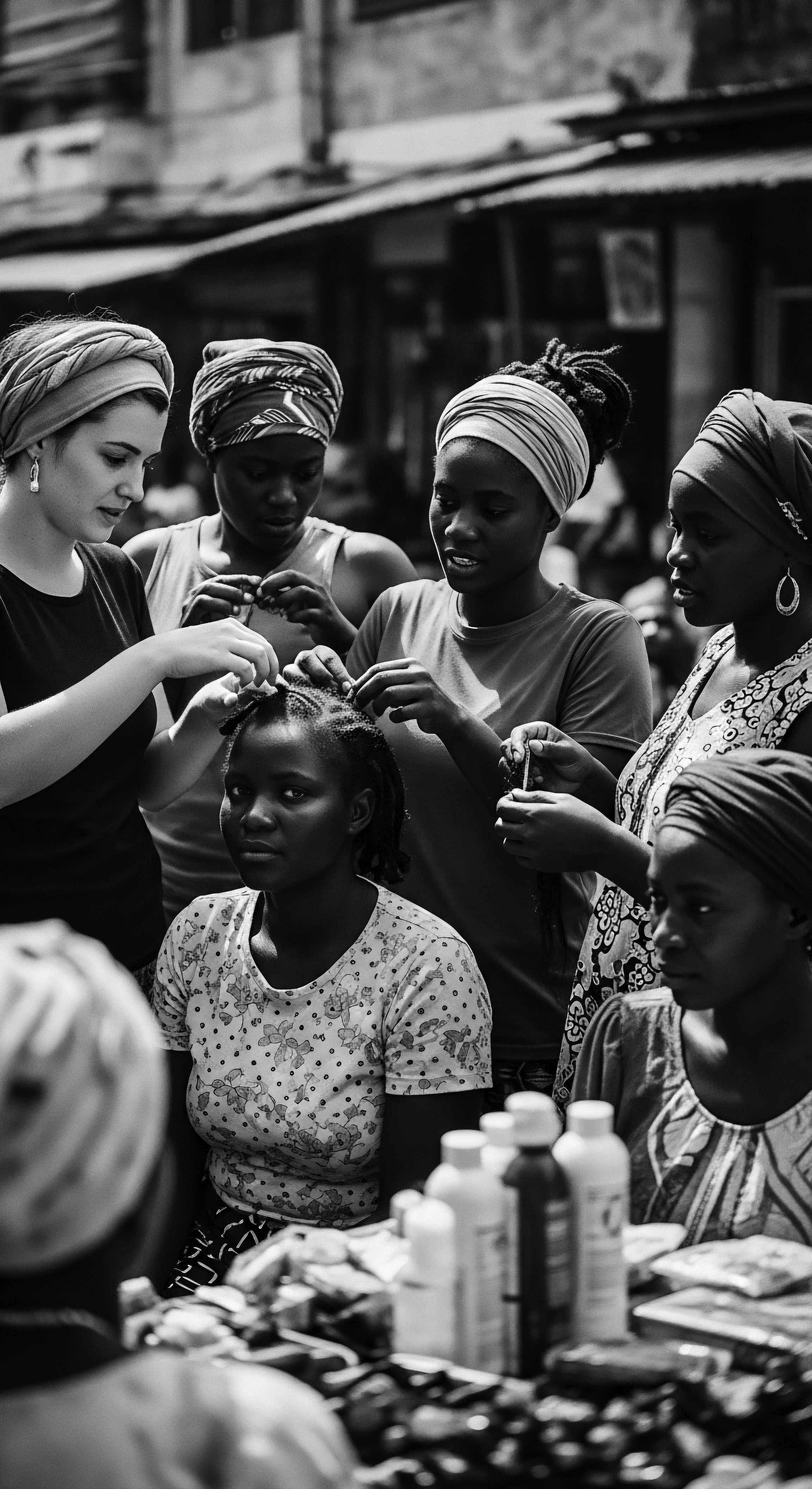
References
- Gale, J. (2004). African Hair ❉ Art, Symbol, and Celebration. K.G. Saur Verlag.
- Byrd, A. S. & Tharps, L. D. (2001). Hair Story ❉ Untangling the Roots of Black Hair in America. St. Martin’s Press.
- Opoku, A. (2002). African Traditional Medicine ❉ A Search for a Scientific Basis. Anansesem Publications.
- Sweet, J. (2018). The Big Book of Natural Hair Care ❉ The Only Book You’ll Ever Need. Independently published.
- Khumalo, N. P. & Gumedze, F. (2017). Hair and Scalp Disorders in People of African Descent ❉ A Comprehensive Guide. Springer.
- Mercer, K. (2008). African-American Hair Care ❉ A Guide to Natural Hair Care. Createspace.
- Banks, I. (2000). Hair ❉ A Cultural History. Rizzoli International Publications.
